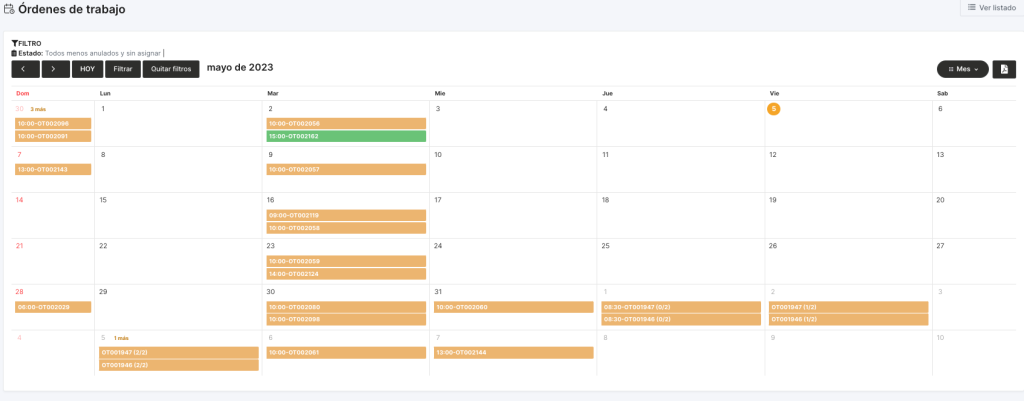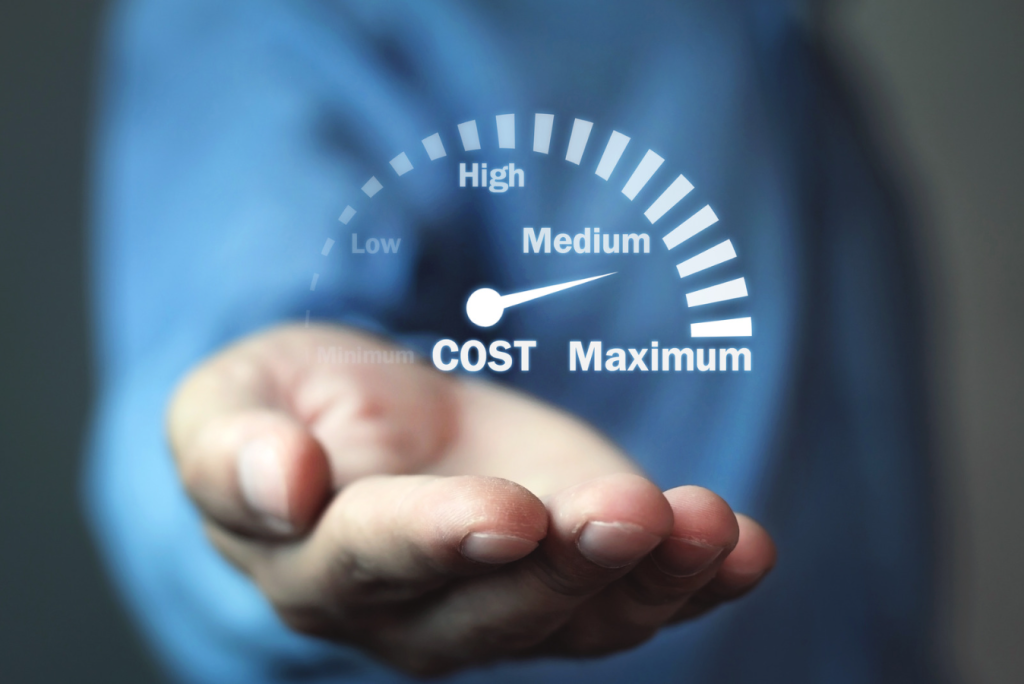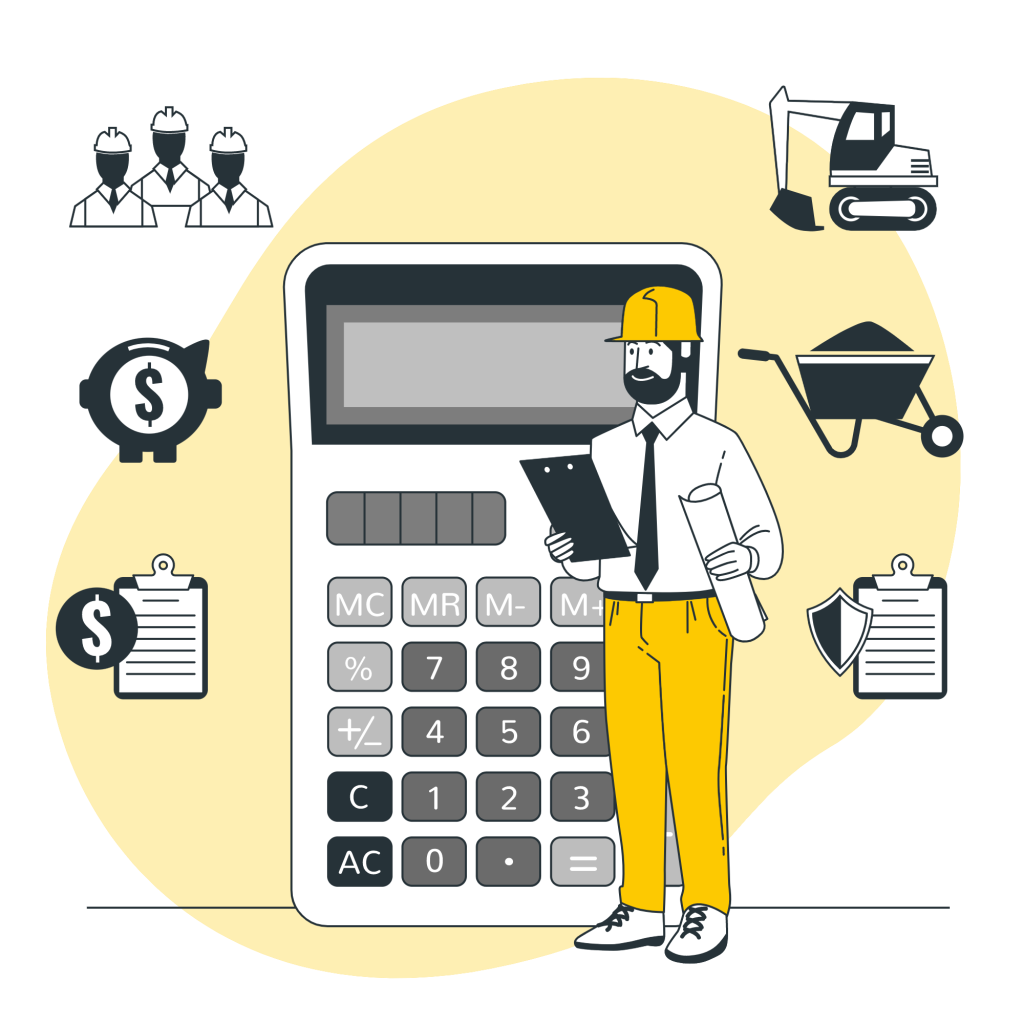|
Escuchar artículo
Getting your Trinity Audio player ready...
|
Maintenance is a vital activity for the proper functioning of any company. The importance of keeping assets in good condition is often underestimated, and insufficient budgets are allocated to carry out the necessary maintenance tasks. However, good maintenance budget planning can avoid costly repairs and prolong the life of company assets. In this article, we will explain how to prepare an effective maintenance budget.

¿What is an estimated maintenance budget?
A maintenance budget is a financial plan that covers the expenses necessary to keep equipment or facilities in good working order. This plan can cover a variety of expenses, such as the cost of maintenance materials, labor, and contracted services. The objective of a maintenance budget is to ensure that assets are in good working condition, to avoid costly breakdowns and to minimize operating costs, see this article on how to reduce maintenance costs: How to Reduce Maintenance Costs by Adopting CMMShere?
Steps to prepare a maintenance budget
- Identify the assets to be maintained: The first step in developing a maintenance budget is to identify the assets to be maintained. These may include production equipment, facilities, vehicles, IT equipment, among others.It is important to have a complete list of the company’s assets and categorize them by their importance and maintenance priority. This will allow us to determine which assets need a greater allocation of resources for their maintenance.
- Define maintenance activities: Once you have a complete list of the assets to be maintained, it is necessary to define the maintenance activities required for each one. These activities can range from a simple cleaning to a complete overhaul of the equipment or facility. It is important to keep in mind that each maintenance activity requires a different amount of time and resources, so it is necessary to establish a priority for each one.
- Calculate maintenance costs: Once the assets to be maintained have been identified, it is necessary to estimate the maintenance costs associated with each asset. These costs may include labor, spare parts, materials, tools, and other expenses related to performing the maintenance tasks. It is important to keep in mind that some assets may have higher maintenance costs than others, so it is necessary to classify them according to their level of importance.
- Estimating future costs: Once you have identified current costs, it is important to estimate future maintenance costs. This will allow you to effectively plan and budget for the future. To estimate future costs, you should consider the following factors:
- Age of equipment and facilities: As equipment and facilities age, they are more likely to need more maintenance and repairs. Therefore, it is important that you consider the age of equipment and facilities when planning for future maintenance.
- Changes in technology: As technology advances, equipment and facilities become obsolete and may require costly upgrades or replacements. You should consider changes in technology when planning for future maintenance.
- Changes in business needs: If the company is growing or changing its focus, new equipment or facilities may be required. You should consider these changes when planning for future maintenance.
- Establish a maintenance schedule: The next step is to establish a maintenance schedule for each asset. This means determining when maintenance tasks should be performed and how often they should be performed. Some maintenance tasks may require more frequency than others, depending on the type of asset and its level of use. It is important to keep in mind that failure to meet maintenance schedules can increase repair costs and reduce the useful life of the asset.

- Estimate replacement costs: Although maintenance is an important activity, it cannot avoid the fact that assets eventually wear out and need to be replaced. Therefore, it is important to include in the maintenance budget an estimate of asset replacement costs. This will allow us to plan ahead and avoid surprise costs that can negatively affect the company’s profitability.
- Review and adjust the budget: Once the maintenance budget has been prepared, it is important to review and adjust it periodically. This is because maintenance costs and needs can change over time, especially if new assets are acquired or company policies change. Therefore, it is important to keep the maintenance budget under constant review and make the necessary adjustments to ensure that the company is always prepared to meet maintenance costs.
Practical exercise 1
Now that we’ve covered the basics of how to prepare a maintenance budget, it’s time to put it all into practice with a concrete example. Here’s a practical exercise so you can apply everything you’ve learned.
Suppose you are the maintenance manager of an industrial company and you have been asked to draw up the annual budget for the maintenance department. To do this, you need to consider the following data:
- The company has a total of 50 machines, which are divided into 3 categories: small, medium and large.
- The annual maintenance cost of each machine is as follows:
- Small Category: $1000/machine
- Medium Category: $2000/machine
- Large Category: $5000/machine
- The company works 8 hours a day, 5 days a week, for a total of 50 weeks a year.
The hourly labor cost for maintenance personnel is $20. - The company has an annual budget for maintenance materials of $100,000.
To prepare the annual maintenance budget, you should follow the steps below:
1. Determine maintenance cost by machine category
First, you need to determine the annual maintenance cost per machine category.
To do this, you must multiply the maintenance cost per machine in each category
by the number of machines in that category.
- Small category: 20 machines x $1000/machine = $20,000
- Medium Category: 25 machines x $2000/machine = $50,000
- Large Category: 5 machines x $5000/machine = $25,000
- Therefore, the total annual maintenance cost per machine category is $95,000.
2. Determine the cost of labor
To determine the annual labor cost, you must multiply the hourly labor cost by the number of hours worked per day, the number of days worked per week and the number of weeks worked per year.
- Annual labor cost: $20/hour x 8 hours/day x 5 days/week x 50 weeks/year = $40,000
3. Determine the total cost of maintenance
To determine the total annual maintenance cost, you must add the maintenance cost per machine category and the annual labor cost.
- Total annual maintenance cost: $95,000 + $40,000 = $135,000
4. Compare the total cost with the budget for maintenance materials.
Finally, you should compare the total annual maintenance cost with the budget for maintenance materials. If the total cost is higher than the budget, you should look for ways to reduce costs or request a higher budget.
- Total annual maintenance cost: $135,000
- Budget for maintenance materials: $100,000
In this case, the total annual maintenance cost is higher than the budget for maintenance materials. Then we recommend you to apply the following strategies: - Renegotiate prices for the supply of spare parts and consumables.
- Search for vendors with more competitive prices, performing a quality
analysis of product vs. service. - Digitize management with CMMS software to optimize preventive maintenance, be more efficient with inventory and manage labor more efficiently.
Practical exercise 2
Let’s imagine you work in a manufacturing company that requires a maintenance department to keep its equipment in top condition. The maintenance department consists of 10 employees, including a maintenance manager, a maintenance engineer, three maintenance technicians and five maintenance workers. The department uses various equipment and tools, including a maintenance vehicle, a crane, welding equipment, and hand tools.
Step 1: Determine the total cost of the maintenance department
To determine the total cost of the maintenance department, you should consider the following costs:
- Personnel Salary: The total salary of the maintenance department personnel is $250,000 per year.
- Equipment rental costs: The company rents a maintenance vehicle and a crane, which costs $20,000 per year.
- Spare parts costs: The maintenance department spends $50,000 per year on spare parts.
Therefore, the total cost of the maintenance department is $320,000 per year
Step 2: Estimate preventive and corrective maintenance costs
Preventive maintenance is the process of regular maintenance performed on equipment to avoid failures and problems. Corrective maintenance is the process of repairing equipment that has already failed. To estimate the costs of preventive and corrective maintenance, you should consider the following:
- Cost of spare parts: The maintenance department spends $10,000 per year on spare parts for preventive maintenance and $25,000 per year on spare parts for corrective maintenance.
- Cost of outside maintenance services: The maintenance department uses the services of an outside contractor for specific repairs and this costs $30,000 per year.
Therefore, preventive and corrective maintenance costs are $35,000 and $55,000, respectively.
Step 3: Calculate the total cost of maintenance
To calculate the total cost of maintenance, you must add the total cost of the maintenance department and the costs of preventive and corrective maintenance.
- Total cost of maintenance department: $320,000
- Preventive maintenance costs: $35,000
- Corrective maintenance costs: $55,000
Total cost of maintenance: $410,000
Step 4: Create a profit and loss statement for the maintenance area
Now that we have determined the total cost of maintenance, we can create a simple profit and loss statement for the maintenance area of the company.
| Item | Amount |
| Revenue | $ 0 |
| Maintenance overall cost | $ 410,000 |
| Profit | -$ 410,000 |
This profit and loss statement shows that the maintenance area of the company is a cost center that generates a loss of $410,000 per year, according to the analysis of the profit and loss statement of your maintenance area, it is important to take the following measures from this example to reduce your costs and improve your income. Here are some recommendations on how to do this:
- Perform regular preventive maintenance: This can help you detect and fix problems before they become major costs. Be sure to follow a rigorous preventive maintenance program to reduce downtime and repair costs.
- Identify and correct energy efficiency problems: Many maintenance equipment consumes a lot of energy and, therefore, can be costly to operate. Identify equipment that is less energy efficient and find ways to reduce its energy consumption. You may consider replacing older equipment with newer, more energy-efficient models.
- Track and analyze your expenses: Keep track of all costs in your maintenance area and perform regular analysis to identify areas where you can reduce expenses. For example, you can find ways to reduce the cost of materials and spare parts by negotiating with suppliers.
- Implement a training program for your employees: Make sure your employees are trained and have the necessary skills to perform the job efficiently. A regular training program can help you improve the quality of work and reduce repair and maintenance costs.
- Consider outsourcing some work: If you don’t have the staff or resources to perform certain maintenance jobs, consider outsourcing these jobs. Make sure the contractors are properly qualified and reputable to ensure that the work is done efficiently and at a reasonable cost.
How to optimize maintenance budget costs
In general, we can recommend the following actions to reduce maintenance costs:

- Review the history of maintenance expenses: Before preparing a budget, you should review the history of maintenance expenses. This will allow you to see the actual costs of maintenance operations and determine which expenses should be included in the budget. Using a CMMS, you can obtain the costs of previous maintenance operations and thus have a more realistic basis for the current budget.
- Identify fixed and variable costs: Once you have reviewed the history of maintenance expenses, you should separate fixed and variable costs. Fixed costs are costs that do not change, such as maintenance staff salaries and equipment rental costs. Variable costs are costs that change, such as the cost of spare parts and materials. Keep in mind that there are fixed costs that can be converted into variable costs, for example, outsourcing some types of maintenance tasks could reduce labor costs.
- Determine preventive maintenance costs: Preventive maintenance is an important part of maintenance work. You should determine the costs of the preventive maintenance programs you have in place and any other programs you wish to implement. With a CMMS system, you can accurately plan how much maintenance per year a piece of equipment requires, which you can compare with an equipment failure analysis and materials analysis, and you can extend the time between maintenance and maintenance, bringing savings in that area.
- Plan for corrective maintenance costs: In addition to preventive maintenance, you should plan for corrective maintenance costs. This includes repairs and replacements of equipment and parts that fail, by measuring MTBF and MTTR you can establish an approximation of how often you should be making repairs on critical equipment and thus establish a strategy for replenishment and feeding inventories.
- Incorporate training costs: Maintenance personnel need to be trained to work efficiently. Training costs should be included in the budget, untrained personnel are sure to cause higher costs than untrained personnel, the benefit of having trained personnel will bring higher equipment availability and a shorter MTTR.
- Adjust the budget as needed: Once you have developed the initial budget, you should review it and adjust it as needed. This will allow you to make changes as costs change and projects evolve, frequent monitoring of the P&L is essential to determine which items in the budget structure are deviating, find out why, and what corrective actions should be taken to correct the situation that is causing the cost overrun.

Developing an accurate and effective maintenance budget can help companies better manage their resources and plan for the future. By following the proper teps and taking into account the costs associated with the maintenance department, an accurate estimate of expenses and expected revenues can be made. In addition, it is important to constantly monitor the budget and adjust it accordingly to ensure that the company’s objectives are being met, in addition to having the support of specialized management software to reduce costs and extend the life of the equipment.
We hope this article has been useful, if you want to know more about CMMShere, contact us here, or leave your contact information in the chatbot of our site so that a representative of our company will contact you as soon as possible.





No comment yet, add your voice below!